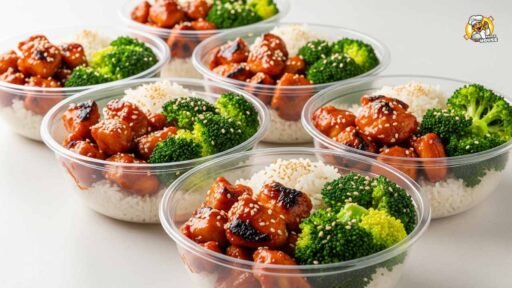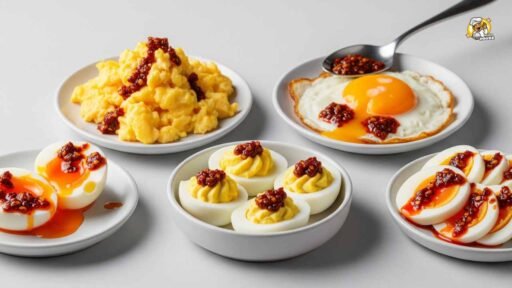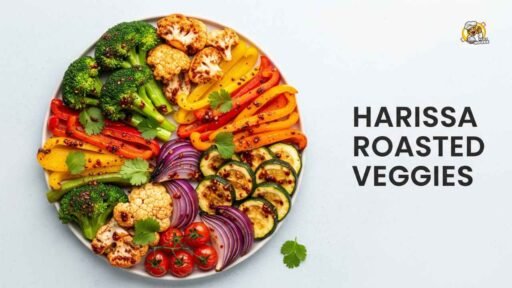Food-at-home prices rose only 1.2% in 2024, a sharp cooldown from 2023’s 5.0%, giving households much-needed breathing room to cook more at home without the sticker shock seen earlier in the inflation cycle. Meanwhile, broiler chicken consumption is cresting past the symbolic 100-pound per-capita mark in the U.S., underscoring chicken’s place as the go-to weeknight protein when speed, cost, and versatility matter most.
Here’s the thing: while costs stabilize, American palates are racing toward bolder, global flavors, and industry trackers who correctly flagged gochujang’s rise years ago say spicy profiles remain durable across generations—even when trends churn elsewhere. That puts a quietly fierce spotlight on ochujang (gochujang), the fermented Korean chile paste that flips “simple chicken” into a fast, big-flavor, meal-prep-friendly bowl—while global K-food players like CJ CheilJedang pour hundreds of millions into U.S. and EU capacity to meet surging demand for convenient, spicy-sweet comfort foods at scale.
The Data
-
Food-at-home price growth eased to 1.2% in 2024, with USDA researchers projecting a modest 1.3% increase for 2025, signaling a more predictable pantry budget for weeknight cooks.
-
U.S. broiler chicken consumption reached about 102 pounds per person in 2024, reinforcing chicken’s status as the country’s most consumed meat and a prime candidate for fast, high-protein bowls.
-
In 2024, 54% of Americans followed a specific eating pattern, with high-protein leading all approaches, and many report shifting toward more fresh foods and less restaurant food—conditions tailor-made for quick, home-cooked prep bowls.
-
Social chatter around “meal prep” dipped 12.8% year over year, yet staples like chicken, garlic, and rice still dominate actual prep behavior, suggesting less hype but steady practice where it counts.
Quick ochujang Chicken Meal Prep Bowls: 20-Minute Dinner Fix (Step-By-Step Guide)

Ochujang, better known globally as gochujang, lands that sweet-spicy-umami trifecta—think funk, heat, and a touch of caramelized depth—so a small spoonful turns fast-seared chicken and warm rice into something that tastes far slower than it actually is. The 20-minute path is simple: stir a no-chop sauce, sizzle bite-sized chicken until just done, glaze with ochujang, toss in quick veggies, and assemble bowls over rice or greens while keeping chicken at a safe internal temp of 165°F for peace of mind.
Because chicken is already the most eaten meat in America and pantry inflation is stabilizing, this bowl sits at the center of the Venn diagram—fast, flavorful, and affordable enough to batch for the week without dread or drama. And if “meal prep” as a hashtag cooled a bit online, real kitchens never left it, which is why flavors that carry weight in small volumes—like ochujang—win on Tuesday nights and in Sunday batch sessions alike.
Why Ochujang Works For Weeknights
Ochujang compresses complexity into seconds, thanks to fermentation that builds umami, a slow glow of heat, and a hint of sweetness that hugs lean proteins like chicken without extra work or long marinating windows.
U.S. households already default to chicken, and the data says consumption keeps climbing, so upgrading the routine with one spoon of paste is a low-friction move that actually sticks week to week.
Also, with food-at-home inflation cooling, cooks can bank small, steady savings by pivoting from takeout to fast bowls, especially when pantry staples like rice, frozen veg, and condiments do the heavy lifting.
This smells like the moment where spicy convenience becomes the baseline expectation, not an exception, and consumers won’t forgive bland for long after a couple of weeks of ochujang-forward dinners.
And here’s the kicker: even if social media attention on “meal prep” dipped, the core behavior persists in kitchens that prize time, budget, and protein goals—so flavor condiments with range matter more than chatter.
Ingredients And Smart Swaps
-
Core: boneless, skinless chicken thighs or breasts; ochujang paste; soy sauce; rice vinegar or lime; honey or brown sugar; garlic; neutral oil; warm rice or greens; and a quick veg mix like shredded carrots, cucumbers, or bagged slaw for crunch.
-
Leaning high-protein is on-trend for 2024, so loading a bowl with chicken and a generous bed of veggies aligns with what many eaters already attempt—and it stays satisfying without heavy sauces.
-
For gluten-free, swap tamari for soy; for lower sugar, cut honey in half and add more vinegar for snap; for lighter heat, dilute the ochujang with a little miso or yogurt to round the edges.
-
If chicken prices wobble week to week, pivot to tofu or eggs for protein, or add more beans and a smaller amount of chicken—still fast, still flavorful, and more resilient to price bumps.
-
Flavor truth: Ochujang’s fermented backbone means even a teaspoon in a dressing or glaze delivers more payoff than most pantry sauces, which is why trend trackers flagged it early and correctly.
The 20-Minute Timeline
-
Minute 0–5: Whisk 2 tablespoons of ochujang with 1 tablespoon of soy sauce, 1 tablespoon of honey, 1 tablespoon rice vinegar, and a splash of water until glossy; cube 1 pound of chicken into 1-inch pieces, salt lightly, and pat dry for better browning.
-
Minute 5–10: Heat a large skillet over medium-high with a tablespoon of neutral oil; spread chicken in a single layer and sear, stirring once or twice, until opaque and cooked to 165°F in the thickest piece.
-
Minute 10–15: Reduce heat to medium, pour in the ochujang glaze, and toss until the chicken is lacquered and sticky around the edges; if needed, add a tablespoon of water to loosen and coat.
-
Minute 15–20: Fill bowls with warm rice or greens, add the chicken, and top with fresh crunch—shredded carrots, sliced cucumbers, bagged slaw—and any fast finishers like sesame seeds or scallions for pop.
-
Safety check: The USDA’s 165°F rule is the reliable guardrail, and using a quick-read thermometer makes “done” a yes/no answer rather than a guess—no gray zone, no dry chicken.
Scale, Store, Reheat
-
Batch two or three pounds of chicken and double the glaze in a wider skillet or two pans to avoid steaming; there’s three big reasons for this: better browning, even cooking, and faster glaze reduction.
-
Store bowls in airtight containers with grains at the bottom, chicken in the middle, and crisp veg in a separate add-on cup to keep textures vivid across three to four days.
-
Reheat chicken and rice in the microwave with a damp paper towel or a teaspoon of water to revive steam, then top with fresh veg and a tiny extra spoon of ochujang or soy to wake flavors.
-
If chasing macros, pre-portion 4–5 ounces cooked chicken per container and weigh rice or quinoa to target carb goals while riding the 2024 high-protein wave without overthinking.
-
Light meal-prep chatter aside, the behavior is sticky in households that need predictable fuel, and spicy flavor leaders keep the routine exciting without extra time investment—sources say that’s the sustainable trick.
Nutrition, Macros, and Satiety
-
High-protein ranked No. 1 among eating patterns in 2024, so bowls that deliver 30–40 grams of protein with fiber from vegetables fit into what many eaters already attempt on weekdays.
-
Chicken’s ubiquity isn’t an accident; affordability and lean protein density make it the backbone of home cooking, especially when prices settle and predictability returns to the aisle.
-
Ochujang’s fermented umami lets small amounts carry flavor, which helps reduce total sauce volume and added sugar without sacrificing punch, a practical move for calorie-conscious meal preppers.
-
For lighter carbs, double greens and halve rice still tastes like dinner because the glaze packs depth, not just heat, a point chefs and flavor houses have underscored as the paste moves mainstream.
-
And if eating more fresh food is trending up while restaurant visits dip, there’s a clear on-ramp for bowls: fast assembly, bright textures, and enough spice to beat takeout boredom.
Cost, Time, and Flavor Economics
-
With grocery inflation slowing, the weekly “cook vs. buy” equation tips toward home cooking again, especially when a 20-minute bowl beats a 45-minute delivery window and arrives cheaper per serving.
-
Gochujang’s rise is no fluke; trend watchers who nailed yuzu and ube also correctly marked gochujang’s climb, which speaks to its staying power across categories like marinades, dressings, and condiments.
-
Chicken’s mass adoption means shoppers can snag deals, buy in bulk, and prep once for three or four bowls, keeping the cost curve low without falling into dullness.
-
Time is the other currency, and cooking minutes have fallen over the decades, so condiments that collapse prep into bold flavor without multi-hour marinades are the new “weeknight” must-haves.
-
In short, the flavor-per-minute ROI here is high, which is why these bowls hook into routine and stick long after novelty fades.
The People
“A former executive told Forbes…” is a familiar setup in corporate sagas, but in kitchens, it’s chefs who move the needle, and chef Deuki Hong boils the ochujang pitch down clean: “It’s like hot sauce, Korean hot sauce, but it’s really not,” he said, arguing that typical hot sauces “would aspire to achieve even a fraction of what gochujang is capable of,” a neat summary of why one spoon transforms a 20-minute bowl into something memorable. That’s the line that explains the shift from bland efficiency to bold efficiency—same minutes, different aftertaste.
The Fallout
Analysts now predict that the “spicy convenience” lane will keep bending grocery aisles toward Korean and pan-Asian profiles, and food majors are voting with capital—CJ CheilJedang announced an 800 billion won investment to expand manufacturing in the U.S. and EU, citing growing demand for Korean foods and fried chicken downstream, which ties directly into proteins and formats U.S. households already cook. The company’s overseas food revenue now hovers near half of total sales, up from 39% in 2019, illustrating how flavor demand migrates from niche to mainstream once weeknight behaviors lock in.
Meanwhile, households chasing high protein and more fresh food keep cooking at home, and with food-at-home prices stabilizing, “premiumized pantry” sauces that deliver global flavor in fast formats look positioned to cannibalize both bland sauces and some takeout occasions. If “meal prep” lost some social sizzle, the reality on the ground says routine rules, and ochujang’s payoff per minute makes it a default lever for staying in the groove while cutting friction and spending.
Step-by-Step Guide: The Exact Recipe
-
Make the glaze: In a bowl, whisk 2 tablespoons of ochujang, 1 tablespoon of soy sauce (or tamari), 1 tablespoon honey or brown sugar, 1 tablespoon rice vinegar, and 1 tablespoon water until smooth and glossy, adjusting heat with more or less paste to taste.
-
Prep the chicken: Cube 1 pound boneless skinless chicken into 1-inch pieces, pat dry, and salt lightly to encourage better browning and less liquid in the pan.
-
Sear fast: Heat 1 tablespoon neutral oil in a large skillet over medium-high; add chicken in an even layer and cook, stirring once or twice, until just cooked through and the thickest piece registers 165°F.
-
Glaze and reduce: Lower the heat to medium, add the glaze, and toss 60–90 seconds until the sauce clings and edges look lacquered, adding a splash of water if needed to coat evenly.
-
Build bowls: Spoon over warm rice or greens, then top with crunchy veg (shredded carrots, cucumbers, or slaw), scallions, and sesame seeds; if batching, store veg separately to keep it crisp.
Pro Tips
-
Faster browning happens in a wide skillet; if doubling, split into two pans to avoid steaming, then combine for glazing at the end.
-
For lighter bowls, cut rice in half and double veg; ochujang’s umami keeps flavor satisfaction high even as carbs drop.
-
Keep a 1-teaspoon “finisher” of ochujang on the side when reheating to revive brightness on day three.
-
High-protein remains the most common diet pattern, so 4–5 ounces of cooked chicken per bowl is a solid target for weekday satiety.
If heat-shy diners are in the mix, blend ochujang 1:1 with yogurt for a creamy, mild drizzle and serve the rest on the side for spice lovers.
The People (Expert Voice)
“It’s like hot sauce, Korean hot sauce, but it’s really not,” says chef Deuki Hong, arguing most hot sauces “would aspire to achieve even a fraction of what gochujang is capable of,” a tidy read on why a tiny amount punches far above its weight in fast meals. That idea—small inputs, big payoff—is why ochujang chicken bowls can be both a Tuesday fix and a Sunday batch with zero flavor fatigue by mid-week.
The Fallout (Real-World Consequences)
-
Brands that bridge convenience and global flavor are racing to own the “weekday spicy” lane—CJ CheilJedang’s 800 billion won plan to expand production in the U.S. and EU is a hard capital tell that demand is sticky, not speculative.
-
Overseas revenue near half of total sales, suggests K-food is becoming an everyday staple in non-Korean households, with dumplings, fried chicken formats, and sauces acting as the gateway set.
-
Interpreting the consumer side, high-protein and fresh-food shifts plus stabilized grocery prices form a durable demand stack for quick, flavorful bowls over scattershot takeout.
-
And while “meal prep” as a keyword wobbled, practical cooks still prize repeatable systems, which is why condiments like ochujang that convert time into flavor efficiently are primed to displace weaker pantry items.
Closing Thought
If spicy convenience becomes the new house standard, will the next big move be more acquisitions and plant investments to lock down the supply of gochujang-forward SKUs—or does a confident home cook simply make ochujang chicken bowls so well that the delivery app sits idle all week?






